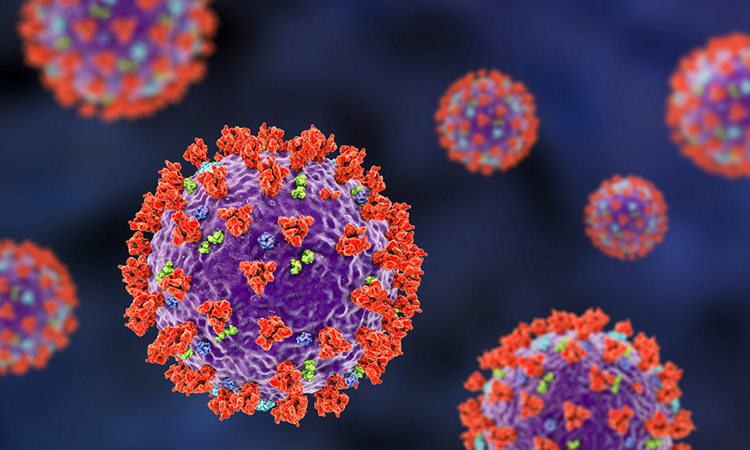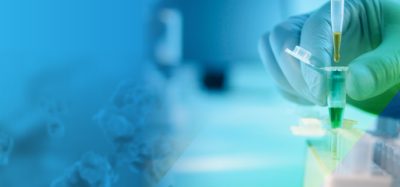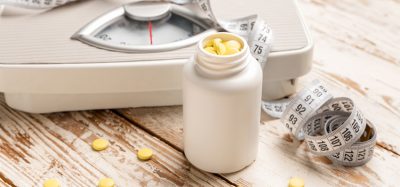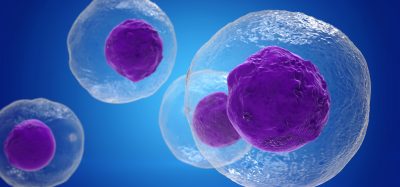Hijacking Leydig cells: how COVID-19 lowers testosterone
Posted: 27 August 2025 | Drug Target Review | No comments yet
Brazilian researchers have discovered that SARS-CoV-2 targets testosterone-producing cells in the testicles, hijacking cholesterol and lipid metabolism in order to replicate. The findings could lead to new therapies for treating the disease based on drugs that disrupt lipid metabolism.


SARS-CoV-2, the coronavirus that causes COVID-19, 3D illustration shows surface spikes of the virus Glycoprotein S (red), M-protein (light green), E-protein (blue)
The COVID-19 virus has been shown to hijack the mechanisms in testicular cells that produce testosterone in order to replicate. It also appropriates the metabolic pathways of these cells and cholesterol – a precursor of testosterone – thereby altering lipid metabolism for its formation.
The study, published in Frontiers in Cellular and Infection Microbiology, was conducted by researchers from the Araraquara School of Dentistry at São Paulo State University (FOAr-UNESP), in partnership with the Ribeirão Preto School of Medicine at the University of São Paulo (FMRP-USP).
Viral particles found in testosterone-producing cells
The study revealed for the first time the presence of SARS-CoV-2 particles in lipid inclusions and organelles responsible for testosterone production in Leydig cells. The researchers also described how the virus interferes with the functioning of these testicular cells – offering new insight into why male patients with severe COVID-19 often show reduced testosterone and cholesterol levels.
Automation now plays a central role in discovery. From self-driving laboratories to real-time bioprocessing
This report explores how data-driven systems improve reproducibility, speed decisions and make scale achievable across research and development.
Inside the report:
- Advance discovery through miniaturised, high-throughput and animal-free systems
- Integrate AI, robotics and analytics to speed decision-making
- Streamline cell therapy and bioprocess QC for scale and compliance
- And more!
This report unlocks perspectives that show how automation is changing the scale and quality of discovery. The result is faster insight, stronger data and better science – access your free copy today
“After infecting the Leydig cells in the testicles, the virus uses lipid metabolism pathways and the cell structure to replicate, which impairs testosterone production. This happens because these cells, responsible for producing testosterone, express high concentrations of the ACE2 receptor, facilitating the entry of the virus,” explains Estela Sasso-Cerri, a professor at FOAr-UNESP who coordinated the study. “In addition, the cells are responsible for storing cholesterol – essential for testosterone synthesis – and contain specialised cellular machinery for producing steroid hormones, making them a favourable target for infection.”
Validating the mouse model
The research used transgenic mice developed in a laboratory to express the viral receptor ACE2. When infected, they develop COVID-19 in a similar way to humans, allowing scientists to better understand the mechanisms of infection.
The researchers saw that both in the transgenic mouse testicle and in the human testicle, there was an intense concentration of ACE2 in the same cell types. The result further validated the model used in the study and confirms that the testicle is a target organ for SARS-CoV-2.
Altered lipid metabolism in Leydig cells
The experiments also showed that SARS-CoV-2 can alter the lipid metabolism of Leydig cells. The virus uses cholesterol stored for testosterone production to replicate itself. Despite reduced testosterone levels in infected cells, they were filled with lipids – because the virus induced an increase in cholesterol uptake for its own replication.
From hormone production to immune response
The study further showed that infection changes the functional profile of Leydig cells. Instead of producing steroid hormones from cholesterol – they shifted to an immunological role.
“Infection with SARS-CoV-2 also induced the Leydig cells to produce large amounts of pro-inflammatory cytokines, a process they don’t normally perform. This increase in cytokines may also have interfered with testosterone production, impairing this main function,” explains Salmo Azambuja de Oliveira, a student in the Structural and Functional Biology Program (BEF) at the Federal University of São Paulo (UNIFESP).
Implications for men’s vulnerability to COVID-19
According to the researchers, the findings deepen understanding of the cellular and molecular processes linked to testicular endocrine dysfunction caused by viral infection.
“The results corroborate the clinically observed low cholesterol levels in patients with severe COVID-19 and may shed light on men’s vulnerability to COVID-19 and their higher mortality rate compared to women. The study also paves the way for developing markers that indicate the severity of COVID-19, as well as therapies for treating the disease based on [lipid-lowering] drugs that interfere with lipid metabolism and inhibit viral action,” Sasso-Cerri concluded.
Related topics
Animal Models, Covid-19, Cytokines, Hormones, Lipids, Microbiology, Translational Science
Related conditions
Covid-19








